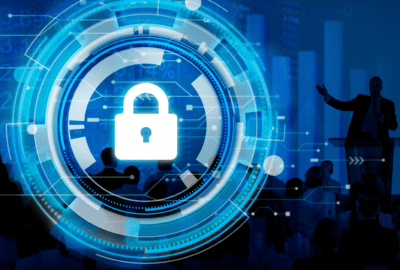 No matter how advanced the technology, we have not yet achieved the development of fully protected digital environments. On the contrary, the digital transformation has promoted the proliferation and evolution of an enormous number of threats capable of crossing even the smallest security breach. In this context, the creation of new strategies becomes imperative. Strategies such as the Zero Trust model.
No matter how advanced the technology, we have not yet achieved the development of fully protected digital environments. On the contrary, the digital transformation has promoted the proliferation and evolution of an enormous number of threats capable of crossing even the smallest security breach. In this context, the creation of new strategies becomes imperative. Strategies such as the Zero Trust model.
If you are looking for a more robust digital security architecture, you should certainly take a look at the Zero Trust model. Read on and learn more about this security approach and its multiple benefits.
Why a new approach?
Thanks to cloud services and to the access to mobile devices, today members of organizations can move their work wherever they go. For most businesses, this means that their data is accessible from devices they don’t know or trust, via unsafe Wi-Fi networks they don’t control.
As a result, those strategies that established a security perimeter to protect systems have become obsolete. Even internal networks have shown vulnerabilities so to protect the sensitive data of organizations, it is necessary to apply a new approach: The Zero Trust model.
What are the main challenges facing organizations that the Zero Trust model can help to overcome?
Too much trust

Traditionally, network intrusions and cyber attacks are believed to have their origin in external threats. In reality, whether voluntary or not, internal users can also become portals for malicious elements. That’s why evolution to a more effective model is needed today more than ever.
The complexity of the IT ecosystem
IT environments are becoming increasingly complex as technology advances. This forces security teams to take increasingly cumbersome measures.
Some teams may take several days to provide secure access because they must consider software and hardware components from different vendors. Generating efficient perimeters takes time for teams to analyze alerts. And if the environments are multiple, the demands become greater.
An architecture that eliminates traditional perimeters, on the other hand, can facilitate devices verification process.
The Zero Trust model
The Zero Trust model drives organizations to take a new perspective in which no device inside and outside their perimeters is automatically reliable. Instead, to build trust and gain access; users must prove their identity and validate that their device is free of malicious elements. According to the Zero Trust; a device that has been compromised cannot benefit from this trust and should not have access.
How to apply the Zero Trust model successfully?
#1 Build a new perimeter

Today, cloud systems represent a vital part of enterprise system architecture. Within this ecosystem, data is at the center inside and outside the cloud. Considering this, relying on a traditional firewall is not an option as data can flow outside its perimeter.
The Zero Trust model then proposes to create a new strategy in which security teams create a new type of perimeter around the data. In this strategy, encryption techniques combined with intelligent authentication help to protect effectively sensitive information in the system.
#2 Consider the human factor
Regardless of the technological tools, you apply in your digital environments, the human factor, besides being one of your most valuable assets, will also represent one of your most important vulnerabilities.
That’s why you need to implement an effective user authentication system as well as strict access management. Use tools that provide advanced protection against attacks such as phishing and that also allow you to identify unusual user behavior based on the data they are trying to access, the session time, and the device they are using.
#3 Constantly scan all devices on your network
Technologies like IoT help new devices integrate into your network every day without you even noticing. That’s why it’s important to constantly analyze your digital environment, looking for new terminals and evaluating the behavior of known devices.
Set up real-time alerts that automatically inform you about the access of a new terminal to your network. Remember that any vulnerable point can be used against you so do not neglect any detail.

In order to get the most out of the Zero Trust model, we recommend using high-tech security tools. On this road to armored systems, you will undoubtedly need a state-of-the-art vulnerability scanner. So don’t hesitate to use the powerful Nessus for this purpose.
Contact us for more information about Nessus or any other ITsec and ITSM tool. At Gb-Advisors we help you protect your digital environments effectively through the best software solutions.



